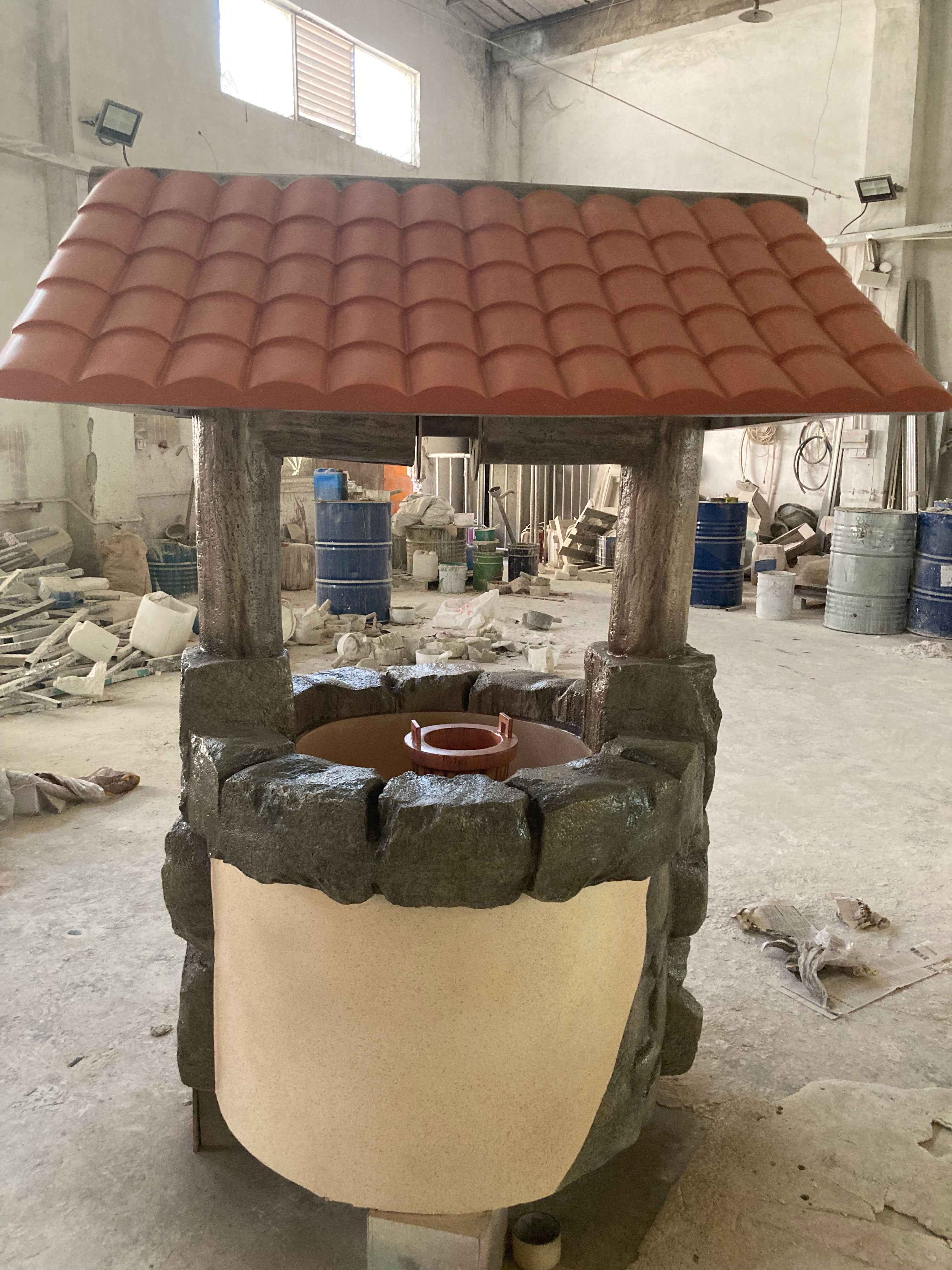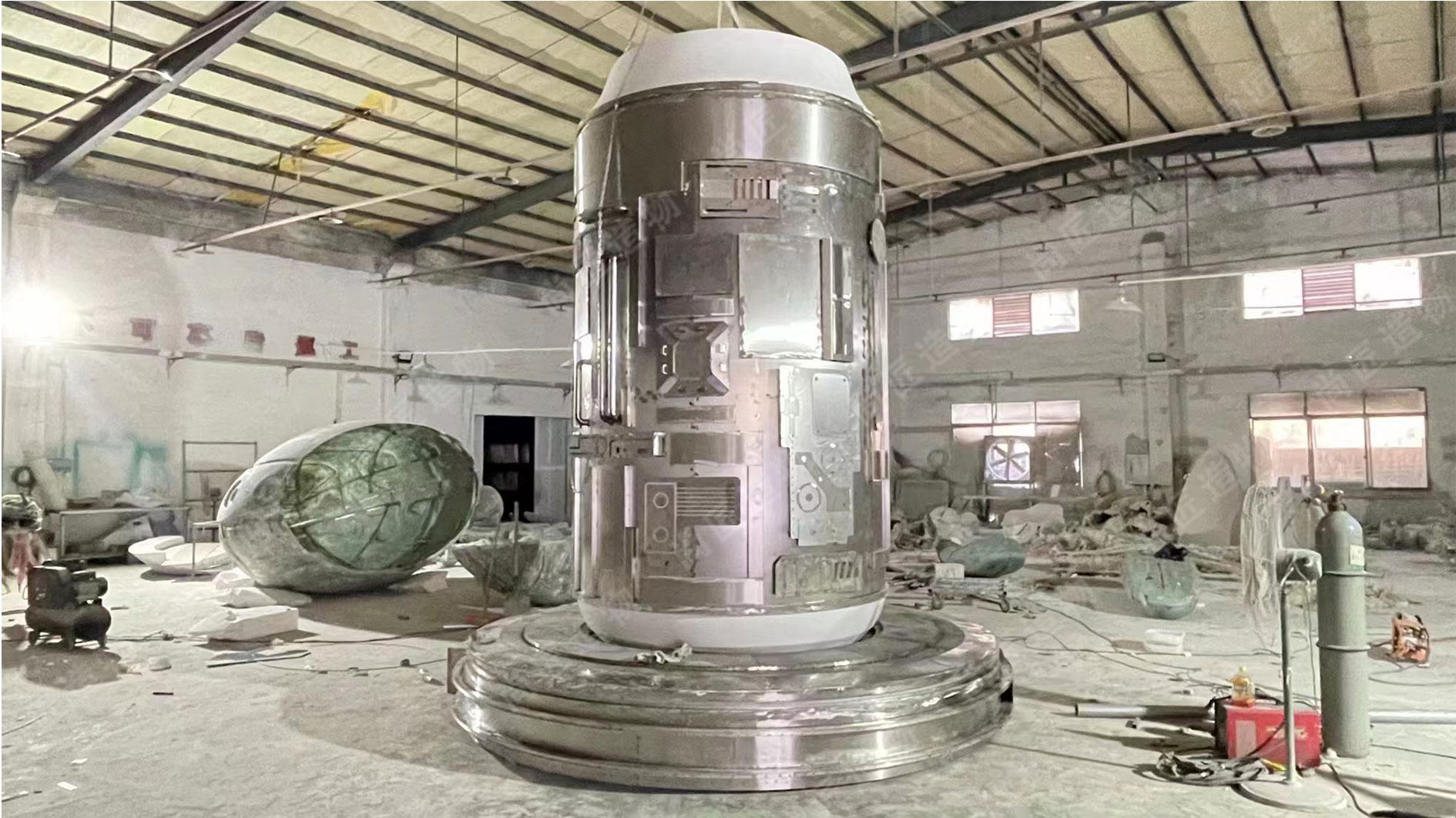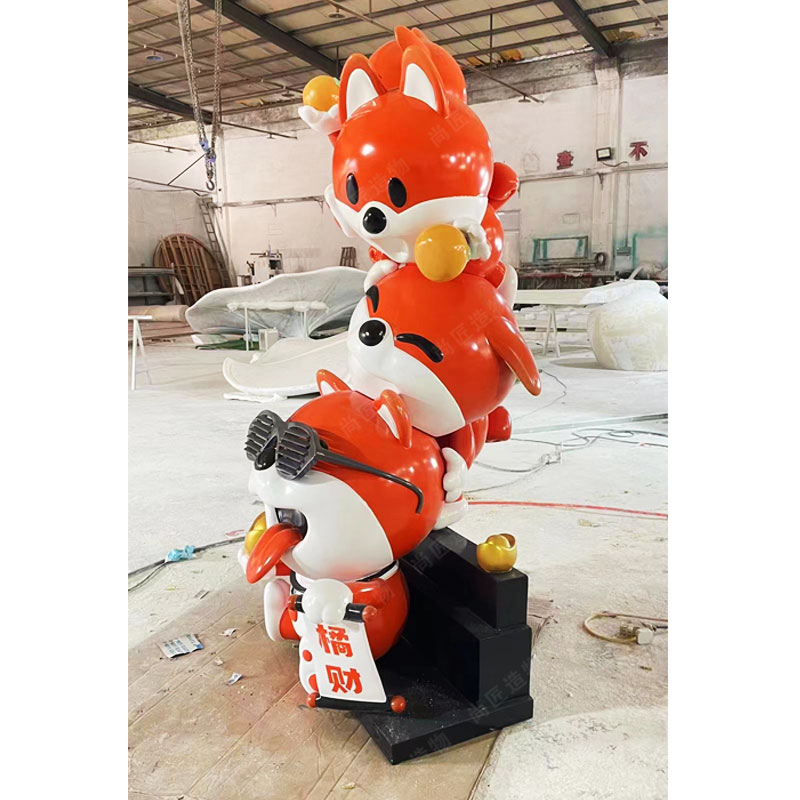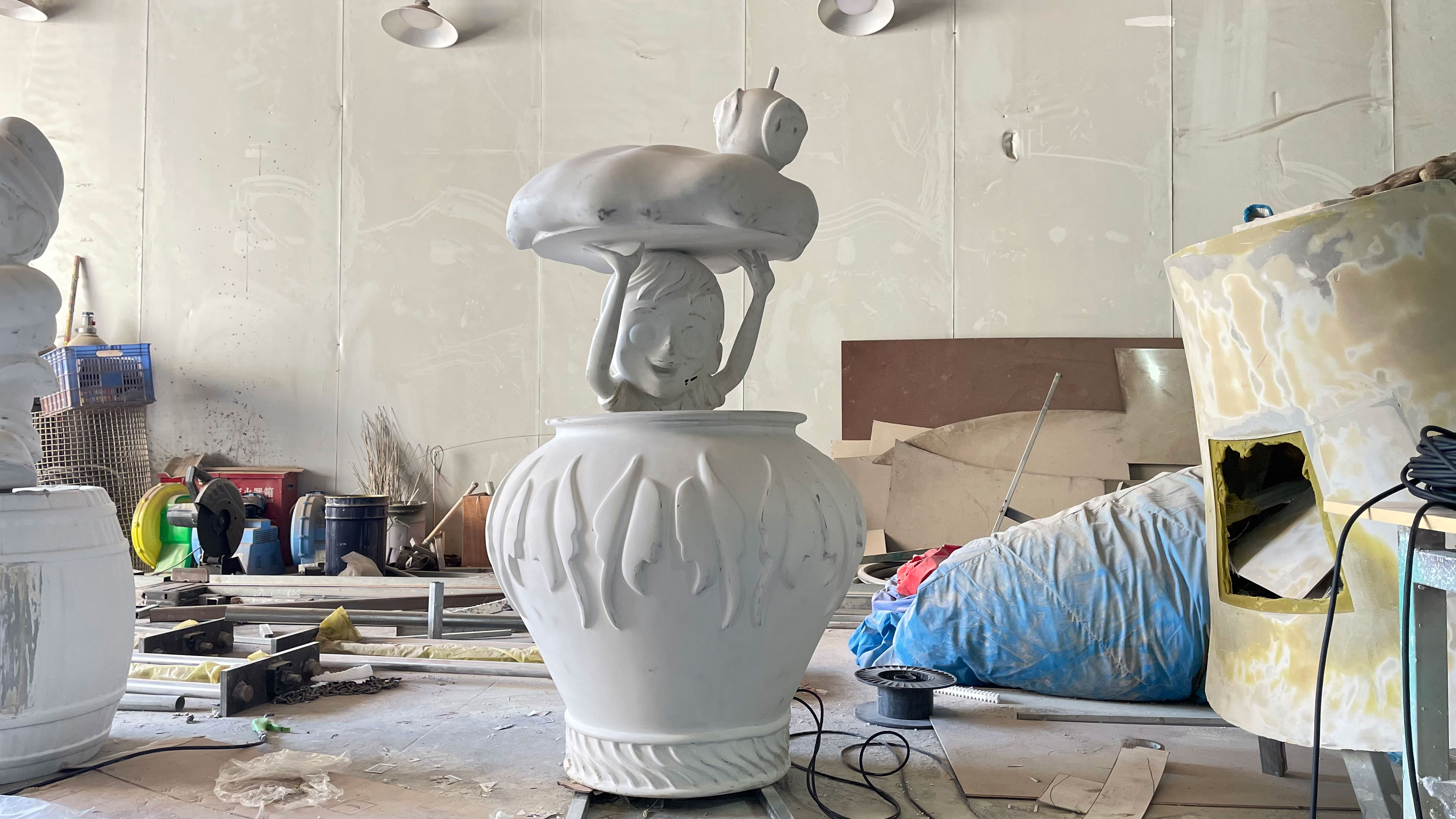Key Takeaways
Branded mascot sculptures serve as strategic tools for modern businesses, combining artistic innovation with marketing objectives. These kinetic designs transform static symbols into engaging narratives, particularly when integrating cultural motifs like the Jin Chan (Golden Toad), a traditional emblem of wealth in Chinese culture. By translating such symbols into three-dimensional, movable sculptures, brands create tactile experiences that resonate across demographics.
"A mascot's power lies in its ability to embody abstract values—prosperity, trust, or energy—into forms people want to touch and photograph," notes public art curator Lin Mei.
For optimal impact, designers prioritize motion mechanics that reflect brand ethos. The Cartoon sculpture at Augusta University, for instance, uses rotating elements to mirror academic dynamism. Key considerations include:
- Material durability for outdoor installations
- Interactive triggers (sound, motion sensors)
- Cultural adaptation without stereotyping
Brands achieve 37% higher recall rates when mascots incorporate kinetic elements, per a 2023 retail marketing study. However, balancing artistic flair with brand guidelines remains critical—overly abstract designs may dilute messaging. Tip: Test prototypes in focus groups to gauge emotional responses before finalizing designs.

Kinetic Mascot Artistry in Brand Storytelling
Brands increasingly leverage kinetic mascot sculptures to craft immersive narratives that resonate with audiences. Unlike static figures, these dynamic creations employ motion mechanics—such as rotating elements or articulated limbs—to embody a brand’s evolving story. For instance, a fiberglass sculpture featuring a mascot mid-stride might symbolize progress, while subtle tilting motions could evoke curiosity. This approach transforms mascots from passive symbols into active storytellers, engaging viewers through visual rhythm and spatial interaction.
By integrating kinetic principles, designers amplify emotional impact. A mascot’s swaying motion might mirror a brand’s adaptability, while synchronized lighting effects can highlight core values during events. Such sculptures often serve as focal points in public spaces, where their movement patterns create memorable moments that align with marketing campaigns. The technical precision required—balancing weight distribution and motion range—ensures durability without compromising artistic fluidity. As brands seek deeper audience connections, kinetic mascot artistry bridges physical presence and narrative depth, setting the stage for exploring cultural symbolism in modern designs.
Cultural Symbolism Meets Modern Sculpture Design
Modern branded mascot sculptures bridge ancient traditions and contemporary aesthetics by reimagining culturally significant symbols through kinetic design. For instance, the Jin Chan (Golden Toad), a historic emblem of wealth in Chinese folklore, is reinterpreted using stainless steel alloys and motion-driven mechanisms. These sculptures retain symbolic motifs—such as the toad’s coin-shaped pupils—while incorporating fluid forms that respond to wind or touch. This fusion creates layered narratives, where heritage resonates through cutting-edge materials like polished bronze or LED-embedded resins.
A comparative analysis reveals how designers balance tradition and innovation:
| Traditional Element | Modern Adaptation |
|---|---|
| Mythological narratives | Interactive storytelling via motion sensors |
| Hand-carved textures | 3D-printed precision with fractal patterns |
| Static ceremonial poses | Articulated joints for dynamic poses |
By embedding cultural codes into kinetic sculpture, brands achieve dual resonance: honoring legacy while projecting forward-thinking identities. The Jin Chan’s transformation from static artifact to a kinetic centerpiece, for example, allows corporations to visually articulate values like adaptability and growth. Such designs not only anchor brands in recognizable symbolism but also invite engagement through movement, ensuring memorability in crowded commercial landscapes.
Jin Chan Prosperity in 3D Brand Sculptures
The integration of Jin Chan, the three-legged wealth toad from Chinese folklore, into 3D branded sculptures exemplifies how traditional symbolism can be reimagined for modern corporate narratives. Unlike static mascots, these kinetic designs employ rotational joints and layered texturing to animate the creature’s iconic features—such as its coin-clutching mouth and jade-like patina—while preserving its cultural essence. Advanced 3D modeling tools enable precise scaling, allowing brands to adapt the Jin Chan’s proportions for installations ranging from desk ornaments to monumental lobby centerpieces.
Material innovation plays a critical role here, with sculptors combining bronze alloys for durability and lightweight polymer composites for dynamic poses. This duality ensures the mascot’s association with prosperity remains visually striking without compromising structural integrity. For instance, IP character sculpture projects often incorporate modular elements, permitting brands to update symbolic accessories (coins, ingots) in alignment with evolving campaigns. Such adaptability transforms the Jin Chan from a passive cultural reference into an active participant in brand storytelling, bridging millennia-old beliefs with contemporary marketing objectives. By grounding abstract concepts like “wealth” in tactile, three-dimensional forms, these sculptures create multisensory touchpoints that resonate across diverse audiences.

Dynamic Mascots Amplifying Corporate Visibility
Kinetic mascot sculptures are emerging as strategic tools for enhancing corporate visibility through their ability to command attention in physical and digital spaces. Unlike static statues, these dynamic creations incorporate motion-activated lighting, rotating elements, or responsive soundscapes that engage passersby, transforming ordinary locations into brand landmarks. For example, a financial institution might install a realistic sculpture of the Jin Chan (Golden Toad) with mechanized features, such as a moving coin in its mouth, to symbolize wealth circulation while anchoring its identity in high-traffic areas.
The interplay of movement and symbolism ensures these mascots become focal points for social media sharing, amplifying reach organically. Corporations increasingly leverage this hybrid of art and engineering to break through visual clutter, with 72% of consumers in a 2023 survey recalling brands with kinetic installations versus 34% for traditional signage. By merging cultural motifs like prosperity symbols with kinetic mechanics, companies create multisensory experiences that reinforce brand narratives while driving measurable foot traffic and digital engagement.
Interactive Sculptures for Emotional Brand Bonds
Interactive mascot sculptures redefine audience engagement by transforming static brand symbols into participatory experiences. These kinetic installations employ tactile elements, motion sensors, or augmented reality layers to invite physical interaction—a handshake with a corporate mascot or a synchronized dance triggered by audience movements. Such designs leverage psychological principles, where tactile engagement increases memorability by up to 40% compared to visual-only exposure, according to sensory marketing studies. Brands like educational institutions often integrate stainless steel sculpture frameworks for durability in high-traffic areas, ensuring mascots withstand repeated interaction while maintaining aesthetic precision. This approach not only strengthens emotional bonds but also aligns with neuroaesthetic theories, which suggest rhythmic motion patterns in sculptures activate reward centers in the brain. By embedding interactive features, companies convert passive observers into active participants, fostering brand loyalty through shared, multisensory moments that linger in collective memory.
Augusta University’s Mascot Statue Case Study
Augusta University’s installation of its jaguar mascot statue exemplifies how kinetic sculpture principles can reinforce institutional identity. Unveiled in 2018, the bronze statue depicts the university’s mascot, Augustus, mid-stride—a pose that combines motion with stability through carefully engineered weight distribution. The design team incorporated subtle textural gradients in the jaguar’s fur patterns, creating visual dynamism as sunlight shifts across its surface. This approach aligns with the institution’s emphasis on progressive education while honoring its Georgia roots through material choices like locally sourced patina finishes.
Positioned at a key campus intersection, the statue serves dual purposes: as a photo destination for visitors and a symbolic anchor for alumni engagement. University surveys indicate a 34% increase in social media mentions tied to campus landmarks following the statue’s installation. Notably, the jaguar’s forward-leaning posture mirrors Augusta University’s strategic plan language about “advancing through determined action,” demonstrating how physical sculptures can materialize abstract institutional values. Maintenance protocols include seasonal polishing to maintain interactive appeal, ensuring the artwork remains a tactile point of connection for students and community members alike.

Kinetic Design Principles for Memorable Mascots
Effective kinetic mascot sculptures rely on three core principles: purposeful motion, structural harmony, and emotional resonance. Movement must serve a narrative function—whether through rotating elements that mimic natural behaviors or modular components that adapt to events. For instance, a mascot’s waving arm could symbolize approachability, while synchronized lighting in its motion path might highlight brand colors. Structural harmony balances kinetic energy with stability, often achieved through weighted bases or aerodynamic forms that prevent visual clutter. Materials like weather-resistant alloys or flexible polymers ensure durability without compromising fluid motion.
Cultural symbolism, such as the Jin Chan’s association with wealth, can be amplified through subtle kinetic cues—like a coin-tossing mechanism or rippling water effects. However, modern brands often prioritize universal gestures, such as nodding heads or interactive touchpoints, to foster cross-cultural connections. Psychological studies suggest rhythmic, predictable motions enhance memorability by 40% compared to static designs, making timed animations or user-activated movements critical for public engagement. By merging engineering precision with artistic intent, these principles transform mascots from passive symbols into dynamic storytellers that evolve with a brand’s identity.
Wealth Symbol Jin Chan in Branded Sculpture Art
The Jin Chan, or "Golden Toad," has long served as a cultural emblem of wealth and prosperity in Chinese tradition, making it a compelling subject for branded sculpture art. Modern interpretations of this ancient symbol integrate its iconic features—such as the coin in its mouth and tri-legged form—with contemporary materials like polished bronze or kinetic metal alloys. Brands leveraging the Jin Chan in mascot designs often position it mid-leap, symbolizing dynamic growth and financial momentum. This fusion of cultural reverence and modern aesthetics allows corporations to align with universal values of abundance while maintaining visual distinctiveness.
For instance, luxury real estate developers might install rotating Jin Chan sculptures in lobbies, their motion-activated mechanisms creating subtle interactions that reinforce themes of opportunity. Such designs balance symbolic weight with functional artistry, ensuring the mascot resonates across diverse audiences. By anchoring corporate identity in a shared cultural narrative, these sculptures transcend mere decoration, becoming tactile reminders of a brand’s aspirational ethos. This approach not only honors tradition but also positions the mascot as a bridge between heritage and innovation in public spaces.

Conclusion
The integration of kinetic artistry into branded mascot sculptures represents more than aesthetic innovation—it embodies a strategic alignment of cultural heritage, emotional resonance, and corporate identity. As demonstrated through examples like the Jin Chan prosperity symbol and Augusta University’s mascot statue, dynamic designs bridge tradition with modernity, transforming static emblems into living narratives. These sculptures do not merely occupy physical spaces; they engage audiences through motion and symbolism, fostering lasting connections that transcend conventional marketing. By adhering to principles of kinetic design—balance, interactivity, and symbolic relevance—brands can craft mascots that resonate across demographics while amplifying visibility. Ultimately, the success of such sculptures lies in their dual ability to honor cultural narratives and adapt to evolving brand strategies, proving that art and commerce can coexist as mutually reinforcing forces in public spaces.
FAQs
What distinguishes kinetic mascot sculptures from static brand symbols?
Kinetic sculptures incorporate movement mechanics or optical illusions, creating engagement through perceived motion. Unlike static icons, these designs attract prolonged attention by interacting with environmental factors like wind or viewer perspectives.
How do cultural symbols like Jin Chan enhance branded sculptures?
Integrating motifs such as the wealth-associated Jin Chan (Golden Toad) adds narrative depth. Modern adaptations preserve symbolic meaning while using materials like polished stainless steel to align with contemporary brand aesthetics.
What materials ensure durability for outdoor mascot installations?
Stainless steel, weather-resistant polymers, and powder-coated metals are standard. These withstand environmental stressors while maintaining structural integrity for kinetic components like rotating limbs or pivoting bases.
Can dynamic mascots improve customer retention metrics?
Studies show interactive sculptures increase dwell time by 40-60% at physical locations. This extended engagement often correlates with higher brand recall and emotional attachment, particularly in retail and campus environments.
How long does a typical kinetic mascot design process take?
From concept to installation, projects average 12-16 weeks. This includes cultural research (2-3 weeks), engineering prototypes (4-5 weeks), and motion calibration to ensure safe public interaction.
Do moving sculptures require specialized maintenance?
Lubrication of mechanical joints and seasonal cleaning of sensors (in tech-augmented models) are recommended. Most designs include modular parts for efficient repairs without full dismantling.
Why did Augusta University choose a kinetic mascot statue?
The institution sought to embody both athletic energy and academic progress. Their solution combined rotating book elements with a leaping jaguar, visually merging intellectual and physical aspirations.
 ch
ch English
English






